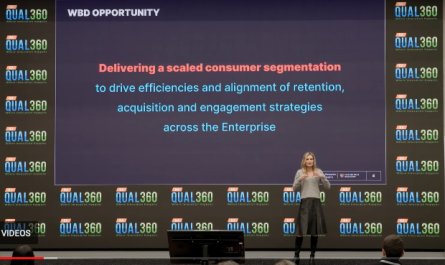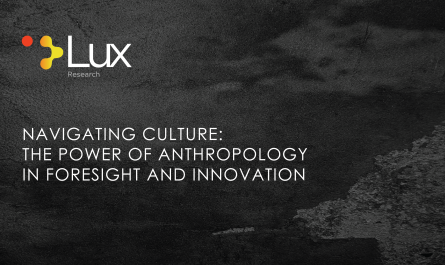Merlien Institute’s 4th Qualitative360 North America conference brought together over 115 qualitative researchers at the Gallup Headquarters in Washington D.C. Here are some of my key take-aways.

Qualitative research, together with the entire market research industry, is facing a critical transformation. Gallup’s CEO Jim Clifton elegantly connected the first days of MR – starting with Dr George Gallup correctly predicting the 1936 presidential election results (Franklin Roosevelt defeating Alf Landon) – to the impact that analytics will have on the industry. Ending his opening statement, Clifton left a critical note for market researchers to embrace change and to be prepared for the coming transformation of the industry.
“Big Qual”, the theme of this year’s Qual360 series, connected two trends. An increased focus and use of new technologies, and an increased focus on the respondents themselves as human beings with emotions and feelings. On a closer look, the two can compliment each other and in fact drive the development of new methodologies as well as (digital) tools.
A human touch
There is real science behind empathy and storytelling. Tim Urmston, CEO of Seek Company showed a number of great examples how understanding people and their emotions leads to better insights, demonstrating the effectiveness of empathy with simple real-life experiments. Empathy is increasingly (and successfully) used in brand communication, with over 30% of this year’s superbowl spots being empathetic commercials playing with emotions. Empathy allows for deeper insights while providing a more emotionally accurate place to start (for example) innovation processes. Urmston made the point that consumer stories and ideas lead to concepts that consistently score high, often setting brand-record concept scores.
The German agency september strategie also introduced the implicit measurement of emotions, capturing and identifying patters from over 20 psycho-physiological data streams. This can help to better understand customers and prevent misconceptions, so Oliver Spitzer, the firm’s Managing Director.
Increasing engagement is the ultimate goal behind the closer observation of feelings and emotions. AOL as well as Kadence, together with its client Dow Jones, provided interesting insights into their work with different target groups. AOL’s Amelia Rance, Senior Manager Consumer Analytics, presented interesting strategies on building strong content that aligns well with customers’ different motivations. Research showed that US consumers are skewed towards emotional moments, while German audiences are likely to be attracted by practical themes and Japanese consumers want to be inspired.
Dow Jones sought to engage with a highly exclusive group of luxury property buyers. In their research together with Kadence the publisher wanted to better understand this target group. A two-week online community lead to surprising results and also helped researchers to overcome their own bias. One key finding for example showed that the concept of happiness amongst the target group was much closer related to family, children or pets rather than to material values like cars, houses or watches.
The two-week research timeline also was an important factor in creating a stronger engagement because respondents had the time to (re)consider their responses and even discuss them with their spouses. This lead to very well articulated and substantiated findings that helped to shape the future content and design of the magazine’s online offering.
Qual inside the organization
Another aspect discussed at Qual360 was the internal organization and use of qualitative research. Facebook’s Tara Franz highlighted her personal efforts to integrate qualitative research across the organization. One key message of hers was to ensure market research is part of everyone’s goals. She encouraged quallies to demonstrate the added value that qual can bring to different parts of the business and move beyond the traditional presentation of results. In short, be human – also in the way you communicate the value and results of MR.
Gallup took on the challenge of analysing the 2016 presidential election and trying to understand how qualitative research can help to improve polling results. One surprising finding for Ilana Ron Levy and Stephanie Marken was the huge amount of qualitative data found within the data collected through quant polls the company has carried out over the past 80 years. A qualitative look at matching responses in binary surveys for example was likely to uncover different motivations from different respondents for the same answer. Qual thus can help to better describe and understand quant results. Time and budgets permitting, the combination of qual and quant may be the solution to better election polling.
The strongest message coming from the two-day conference was that brands – and researchers – are making big efforts in really connecting with and understanding consumers. In a world here customers are increasingly vocal, critical and well-informed, brand communication is rapidly changing. And qual can provide the insights to facilitate this communication.
Stay tuned for part 2 – A digital future…
In the second part of this Qual360 review, we will look at the new tools and technology trends emerging for qualitative researchers.









 by
by 


